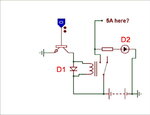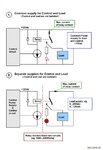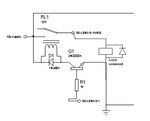poxkix
Member level 5

Actually Yes, But since the current sources are not readily available, we use the voltage sources........ The rating 12v 5A means the switching is occured at 12V and it can carry 5A of current safely........
Oh. Okay, referring from your circuit version the voltage source connected to NO is 12v 5A. And the supplied amp will differ upon the device being controlled which is the coin box. Did I get that right?:???:
Actually it is ohms law, but instead of R (resistance) you have to use Impedance(z= R+jX where X is the inductive reactance) of the relay coil to calculate the current flows through it.
How do I get the value X?
Thanks for the edited circuit and the link. Now I'm more knowledgeable on this project I'm doing. Thanks sir.










